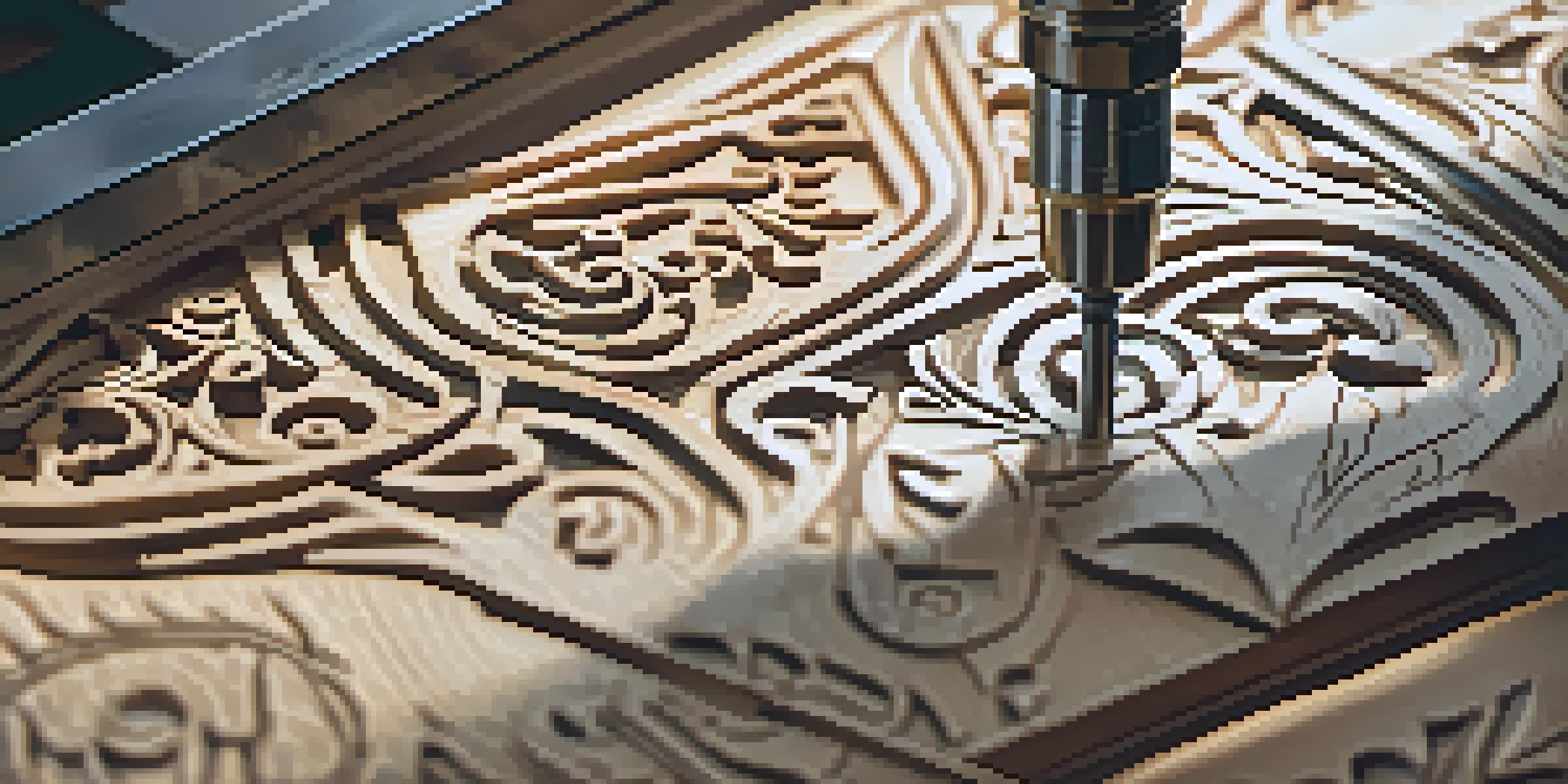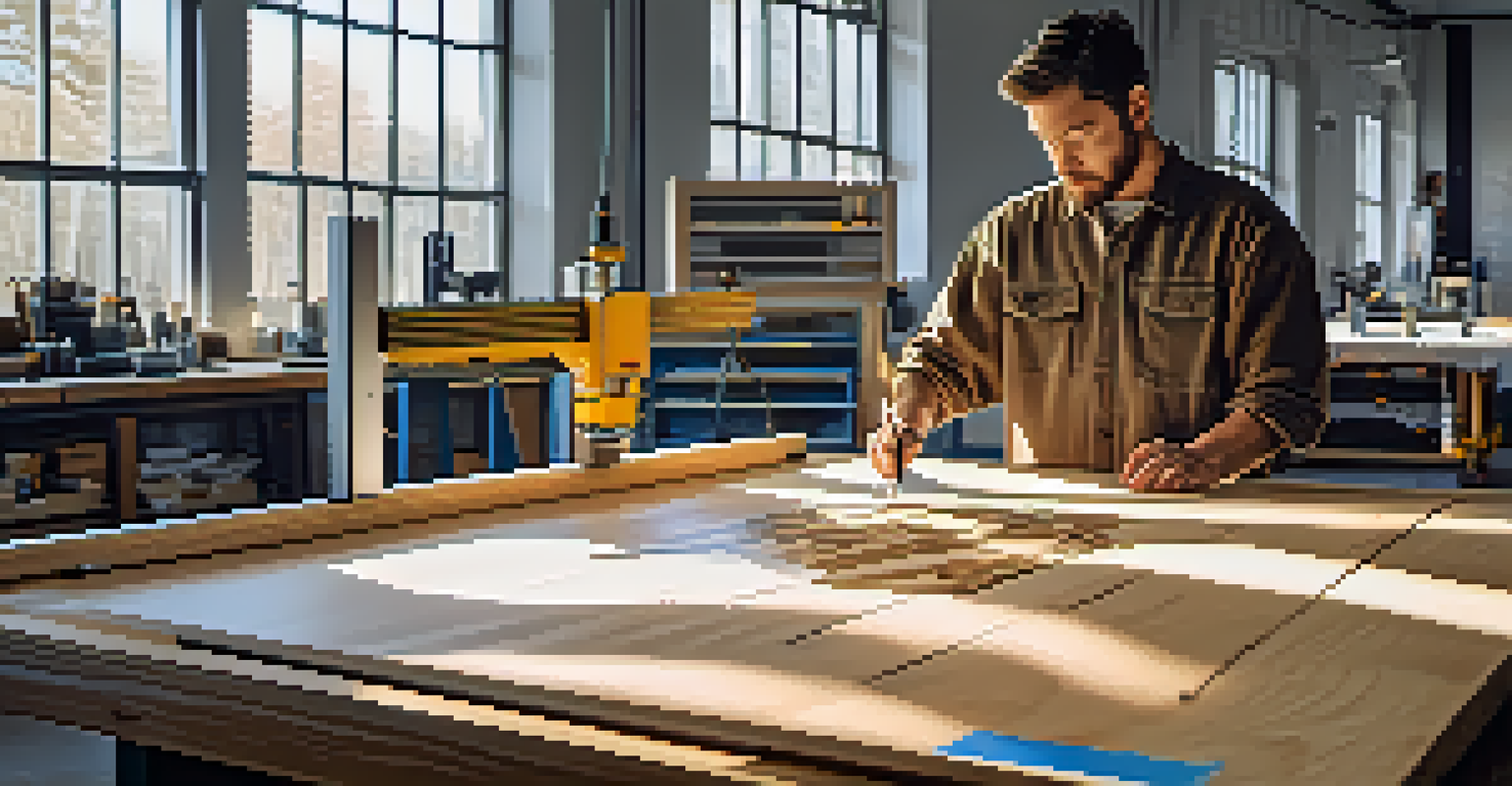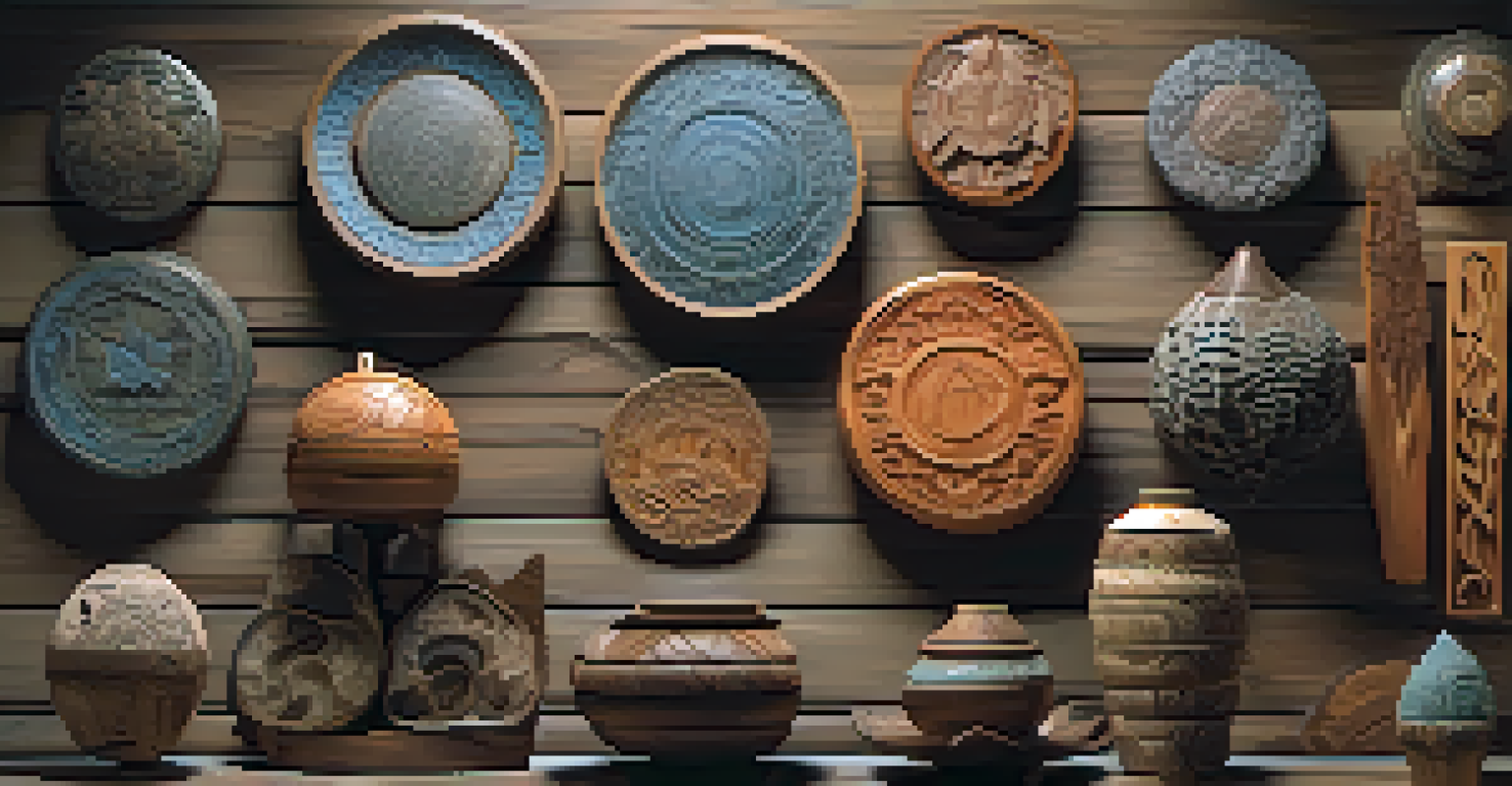The Role of CNC Machines in Modern Carving Practices

Understanding CNC Machines and Their Functionality
CNC machines, or Computer Numerical Control machines, are devices that automate and control machine tools via computer programming. This technology allows for precise and intricate designs that would be incredibly difficult to achieve by hand. Essentially, CNC machines translate digital designs into physical objects, making them a game-changer in various industries, including carving.
The best way to predict the future is to invent it.
Imagine trying to carve a detailed pattern into wood with just a chisel; it's a painstaking process that requires immense skill and patience. Now, picture a CNC machine expertly executing that same design in a fraction of the time, with flawless accuracy. This ability to replicate complex designs consistently is what sets CNC machines apart and has made them integral in modern carving practices.
As carving evolves, CNC machines continue to push the boundaries of what is possible. They combine traditional craftsmanship with cutting-edge technology, enabling artists and craftspeople to explore new creative avenues while maintaining a high level of precision.
The Evolution of Carving Techniques with CNC Technology
Carving has a rich history, rooted in techniques passed down through generations. However, the introduction of CNC machines has marked a significant turning point in this art form. With the ability to create intricate designs quickly and accurately, these machines have transformed how artists approach their work.

For instance, a traditional woodcarver might take days to shape a single piece, while a CNC machine can produce a similar item in just a few hours. This efficiency not only saves time but also allows artists to experiment with more ambitious projects without the fear of wasting materials. It’s an exciting time for carvers as they blend old-world skills with modern technology.
CNC Machines Transform Carving
CNC technology revolutionizes carving by enabling precise and intricate designs that were previously difficult to achieve manually.
Moreover, the use of CNC machines has democratized carving. Artists with limited experience can now produce high-quality pieces, broadening the scope of who can participate in this craft. This shift has led to a surge in creativity and innovation in the carving community.
Precision and Accuracy: Key Benefits of CNC Carving
One of the standout features of CNC machines is their precision. These machines operate based on exact measurements and specifications, ensuring that every cut is consistent. This level of accuracy is particularly beneficial in applications where detail is paramount, such as in intricate furniture designs or architectural elements.
Creativity is intelligence having fun.
Consider a scenario where a carver needs to replicate a specific pattern across multiple pieces. With CNC technology, they can program the design once and produce identical copies without any variations. This not only enhances quality but also significantly reduces the chances of human error, which can be a common issue in traditional carving methods.
The result is a perfect balance of craftsmanship and technology, where artists can achieve the highest standards of quality. This reliability has made CNC machines a favorite among both professional carvers and hobbyists alike.
Material Versatility in CNC Carving
CNC machines are not limited to just one type of material; they can work with a variety of substances including wood, metal, plastic, and even stone. This versatility opens up new possibilities for carvers looking to diversify their projects. By being able to switch materials effortlessly, artists can create unique pieces that blend different textures and finishes.
For example, a sculptor might use a CNC machine to carve intricate designs into wood and then switch to metal for accents or structural elements. This ability to combine materials not only enhances the aesthetic appeal but also adds layers of meaning to the artwork. The sky's the limit when it comes to creativity with CNC carving.
Efficiency and Accessibility in Art
The use of CNC machines allows artists to create high-quality work quickly, democratizing the craft and encouraging innovative projects.
Additionally, the choice of materials allows for experimentation with durability and design. Carvers can choose materials that suit their artistic vision and the intended use of the finished product, whether it's for outdoor display or intricate indoor decor.
CNC Carving: A Gateway to Innovation in Design
The creative potential of CNC machines is perhaps one of their most exciting aspects. With advanced software and design tools, artists can push the envelope of what’s possible in carving. They can create complex geometric patterns, detailed 3D designs, and even custom shapes that were once unimaginable.
Imagine being able to design a piece of art on a computer, tweaking every detail until it’s just right, and then watching as a CNC machine brings that vision to life. This fusion of digital design and physical creation allows for unparalleled innovation in the carving world. Artists can explore new forms and styles, leading to a vibrant and dynamic art scene.
Moreover, CNC technology encourages collaboration among artists, designers, and engineers. By working together, they can develop innovative projects that combine artistic vision with engineering precision. This collaboration enriches the carving community and fosters a spirit of creativity and exploration.
Sustainability and Efficiency in CNC Carving Practices
In today’s world, sustainability is more important than ever, and CNC machines play a role in promoting eco-friendly practices in carving. By optimizing material usage, CNC technology helps reduce waste. Traditional methods can often lead to excess scraps, whereas CNC machines utilize precise cutting techniques that maximize the use of raw materials.
Additionally, the efficiency of CNC machines means that production times are significantly reduced. This not only benefits artists and businesses but also conserves energy and resources. The ability to produce high-quality work quickly allows for a more sustainable approach to crafting.
Sustainable Practices with CNC
CNC technology promotes sustainability in carving by optimizing material usage and reducing waste, benefiting both creators and the environment.
As more carvers embrace sustainable practices, CNC technology stands out as a critical tool in this movement. It empowers artists to create beautiful work while being mindful of their environmental impact, making it a win-win situation for both creators and the planet.
The Future of Carving: Embracing CNC Technology
As we look toward the future, it’s clear that CNC machines will continue to shape the world of carving. Their ability to blend technology with artistry opens up endless possibilities for innovation and creativity. As more artists adopt CNC techniques, we can expect to see an exciting evolution in the types of work being produced.
Moreover, advancements in CNC technology, such as improved software and more accessible machines, will likely make these tools even more prevalent in the carving community. This democratization of technology means that future generations of artists will have the resources to explore and experiment like never before.

Ultimately, the future of carving is bright, with CNC machines at the forefront. They not only enhance traditional skills but also inspire a new wave of creativity that will redefine the art form for years to come.